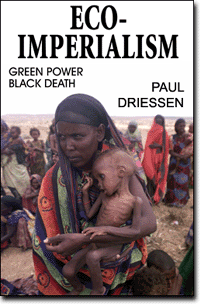Emptying birdbaths will not get rid of a zillion hungry mosquitoes. We need pesticides!
by Henry I. Miller, MD
Scripps Howard News Service
September 17, 2004
The five-year-old U.S. outbreak of West Nile virus is a significant threat to public health and shows no signs of abating, but the government is holding back on a known means of coping with it.
More than 10,000 serious cases last year resulted in 264 deaths in 45 states. So far this year, the mosquito-borne virus has caused more than 1,300 serious infections and three-dozen deaths in humans in 37 states – and we are only midway through the virus season.
There is no known treatment for this epidemic. A vaccine is at least a decade away. The U.S. Centers for Disease Control and Prevention Web site suggests: “avoid mosquito bites” by wearing clothes that expose little skin, by using insect repellent and by staying indoors during peak mosquito hours (dusk to dawn), by mosquito-proofing your home, by removing standing water, by installing and maintaining screens, and by reporting dead birds.
Conspicuously absent on the federal Web site is any mention of what would most help: insecticides or widespread spraying. Anyone curious about the role of pesticides in battling mosquitoes and West Nile is directed to a maze of other Web sites.
Maybe officials with the Atlanta-based CDC don’t get outside much. You don’t have to be a rocket entomologist to know that emptying birdbaths and the saucers under flowerpots is not going to get rid of a zillion hungry mosquitoes.
In the absence of a vaccine (the development of which has public-policy problems of its own), elimination of the vehicle that spreads the disease – the mosquito – ought to be the key to preventing epidemics. But fundamental shortcomings in public policy limit the weapons that are available.
In 1972, on the basis of data on toxicity to fish and migrating birds (but not to humans), the Environmental Protection Agency banned virtually all uses of the pesticide DDT, an inexpensive and effective pesticide once widely deployed to kill disease-carrying insects.
Allowing green politics to trump science, regulators also cited the possibility that DDT posed a cancer risk for humans, an assertion based on questionable studies in mice that were fed extremely high doses of the pesticide.
Not only did government regulators neglect scientific evidence of the effectiveness and relative safety of DDT; they also failed to appreciate the distinction between its large-scale use in agriculture and more limited application for controlling carriers of human disease. Although DDT is a toxic substance, there is a world of difference between applying large amounts of it in the environment – as American farmers did before it was banned – and applying it carefully and sparingly to kill disease-carrying insects. A basic principle of toxicology is that the dose makes the poison.
The regulators who banned DDT also failed to consider the inadequacy of alternatives. Because it persists after spraying, DDT works far better than many pesticides now in use, some of which are toxic to fish and other aquatic organisms. Also, the need to spray other insecticides repeatedly – especially in marshlands and forests, where mosquito-breeding areas are large – drives up costs. Pyrethroid pesticides, the most common alternative to DDT, are inactivated within an hour or two.
The spraying of any pesticide – let alone DDT – has been greeted by near-hysterical resistance from environmental activists, who have attacked the killing of mosquitoes as “disrupting the food chain.” Incredibly, New York’s Green Party literature downplayed the significance of lethal mosquito-borne illnesses: “These diseases only kill the old and people whose health is already poor.”
Since the banning of DDT, insect-borne diseases such as malaria and dengue and now West Nile virus have been on the rise. The World Health Organization estimates that malaria kills about 1 million people annually, and that there are between 300 million and 500 million new cases each year.
How can we drain the public-policy swamp? First, the government should make DDT available immediately for mosquito control in the United States. Second, the United States should oppose international restrictions on DDT. This includes retracting U.S. support for the heinous U.N. Persistent Organic Pollutants Convention, which stigmatizes DDT and makes it difficult for developing countries to use the chemical.
Finally, federal officials should embark on a campaign to educate local authorities and citizens about the safety and potential importance of DDT. Currently, people hear only the reflexively anti-pesticide drumbeat of the environmental movement.
Because DDT has such a bad reputation, it will be politically difficult to resurrect its use. But we should begin the process now. In the meantime, we’ll just slather on the insect repellent, slap, scratch – and occasionally become infected with a life-threatening but preventable disease.
_________________
Henry I. Miller, a physician, is a fellow at the Hoover Institution and the author of The Frankenfood Myth: How Protest and Politics Threaten the Biotech Revolution (Praeger, 2004).
